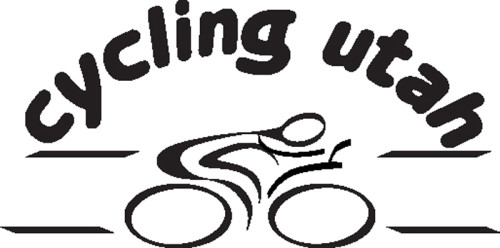Our health and fitness tops the long list of reasons we choose to ride bicycles. But when we ride along major streets and in downtown areas, we may be unwittingly doing ourselves more harm than good by sucking in auto exhaust from nearby or shared traffic lanes. We don’t really know scientifically how much harm we are doing ourselves by breathing exhaust because of a lack of studies or whether we are doing our lungs more harm than good by riding in less than pristine air. But researchers at Portland State University have dumped at least one big shovelful of knowledge into the dark hole of the cycling/ air pollution relationship and have suggested ways designers can minimize exposure.
The National Institute for Traffic & Communities (NITC) at the university recently released a study pragmatically but unpoetically titled Evaluation of Bicyclists Exposure to Traffic-Related Air Pollution along Distinct Facility Types. The researchers state “pollution exposure for urban bicyclists is not well understood due to a lack of direct measurements and insufficient analysis of the determinants of exposure. This knowledge gap impedes pollution-conscious transportation planning, design and health impact assessment.” Many researchers have looked at how pollution affects health and how to reduce it but they haven’t much looked at how it specifically affects bicyclists.
So the institute took a look at the levels of air pollution, automobile traffic, bike riding habits and exertion of cyclists in its home town in Oregon. They checked the levels of volatile organic compounds (VOCs), carbon monoxide (CO), and fine particulate matter (PM2.5). (Air pollution that affects cyclists isn’t confined to highway corridors; NITC found it along an off-street bike path running through an industrial zone.)
Depending on which way it’s blowing, wind can speed you up or slow you down. But it also helps blow the smog away and in that sense does you a favor while you ride, previous research has shown, and rain can wash away some of the pollutants. Other weather factors such as temperature and humidity didn’t affect intake nearly as much.
Previous studies NITC looked at showed mixed, incomplete and inconclusive results as to how much harm air pollution does bicyclists both over the long term and in one big dose on riding hard in heavy traffic on one day. A single heavy dose can irritate the nose and throat but the findings are no more clear than the air as to how seriously it affects the corpus further down the respiratory path (airways, lungs). The study reports that “the effects of chronic exposure are still unknown.”
A tip: if possible ride on a side street. Exposure to the harmful elements can drop by half to two-thirds riding just a block away from the main road. “Hence, provision and usage of low-traffic parallel paths in residential areas is an effective way to reduce bicyclists’ exposure,” the report suggests. And if you have to ride along a main thoroughfare, it seems you’re a little better of (not clear how much) if you can ride on a separate trail and not directly on the road. Also, you’re better off if you don’t have to share lanes as separate bike facilities reduce the need for stops, which require more deep breathing in the long run. Cycletracks and sidepaths, therefore, help more than dedicated on-road bike lanes.
And you’d be better off not speeding up and nor climbing hills (if possible) in high traffic zones – and remember that the heaviest breathing comes not just when you accelerate but over the next minute or two.
And more research needs to be done, NITC says on how factors such as which chemicals in the air do cyclists the most harm. It would also help to know if variables such as the number of stops cyclists make at intersections or type of surface they ride on make a difference, as well as the effects of speed limits, hills, amount of larger automobiles on the road, etc. And we need to learn more about the relationship between distance from traffic reduces intake (how many feet away should the bike path lie to reduce X amount of exposure?).
The researchers also note that previous studies as well as their own took place in specific cities in different countries at different times and may not apply in other conditions.
You can view the report online at http://ppms.otrec.us/media/project_files/NITC-RR-560.pdf .


